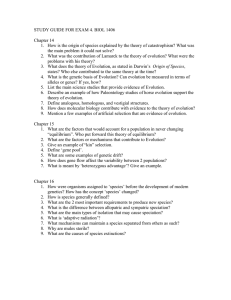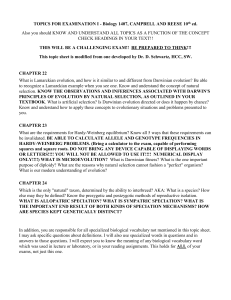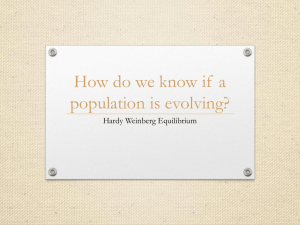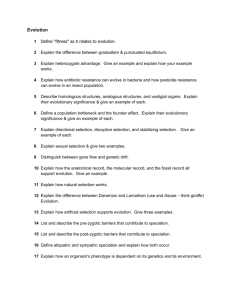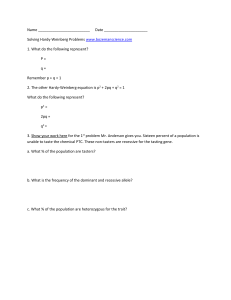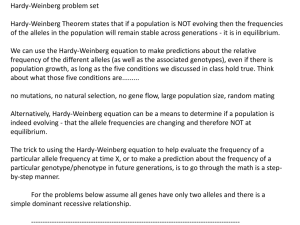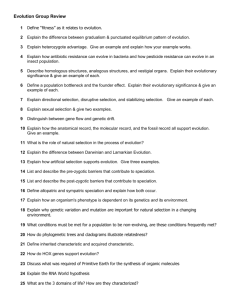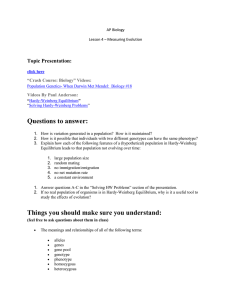Evolution Leftovers - Blue Valley Schools
advertisement
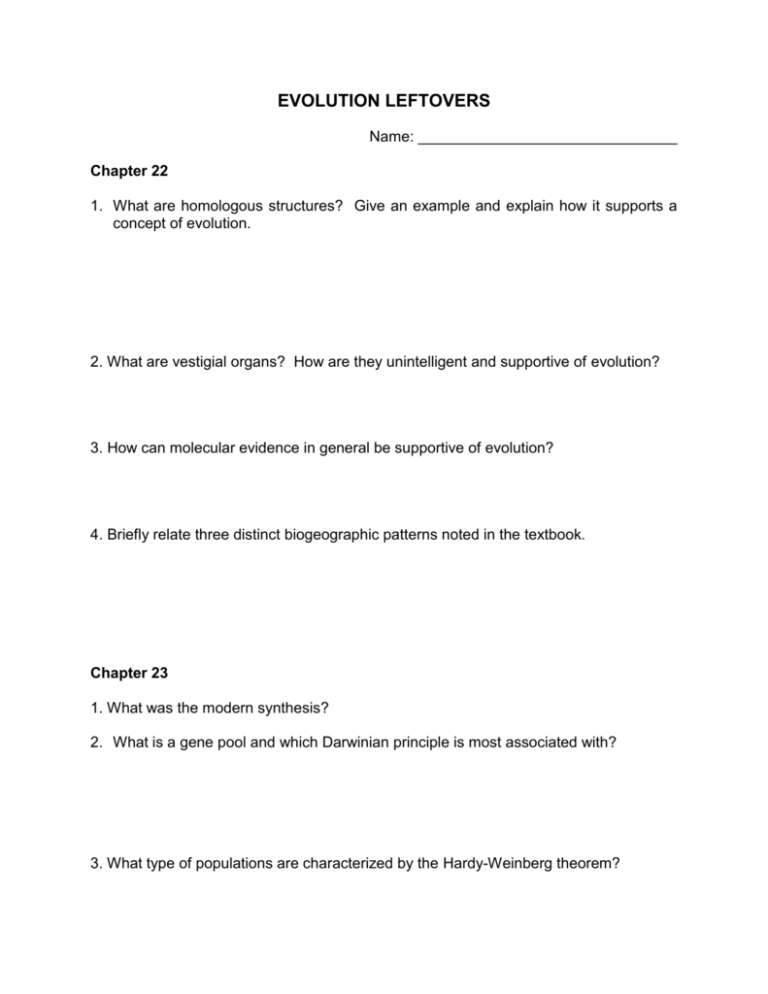
EVOLUTION LEFTOVERS Name: _______________________________ Chapter 22 1. What are homologous structures? Give an example and explain how it supports a concept of evolution. 2. What are vestigial organs? How are they unintelligent and supportive of evolution? 3. How can molecular evidence in general be supportive of evolution? 4. Briefly relate three distinct biogeographic patterns noted in the textbook. Chapter 23 1. What was the modern synthesis? 2. What is a gene pool and which Darwinian principle is most associated with? 3. What type of populations are characterized by the Hardy-Weinberg theorem? 4. What does this theorem state about the frequencies of alleles and genotypes within a population? 5. What is the equation for Hardy-Weinberg equilibrium? 6. Name the five conditions for non-evolving populations in Hardy-Weinberg equilibrium. 7. Explain how changes in each of these conditions can result in evolution (changes in the allele and gene frequencies of a population). 8. Given that the frequency of a homozygous recessive (most easily quantified since you can’t tell the difference between homozygous dominant and heterozygote individuals) trait is 30%, use the Hardy-Weinberg equation to determine the frequency of the recessive (q) and dominant alleles (p), and the percentage of homozygous dominant and heterozygous individuals. Show your work below. q = ______, p = ______, Homo D = ________, Hetero = _________ 9. What is genetic drift? 10. How can the bottleneck effect result in evolution of a species? 11. How can the founder effect result in evolution of a species? 12. What happens to gene flow when two populations of a species become geographically isolated? 13. What is fitness a measure of? 14. What are the positive and negative aspects of sexual reproduction from an evolutionary perspective? 15. What does speciation predict imperfection in organisms? Chapter 24 16. What is sympatric speciation? 17. How has polyploidy in plants provided an example for sympatric speciation? 18. How does the evolutionary tree comparing Darwinian gradualism and Punctuated equilibrium look different? 19. Explain how current molluscan eye plans provide a example of how transitional species can be productive even though their eyes are not “fully formed”. 20. How are the terms herterochrony and peadomorphosis related to the domestication of the dog? Chapter 25 1. Define phylogeny. 2. Define systematics. 3. Explain the relationship between analogous structures and convergent evolution.
